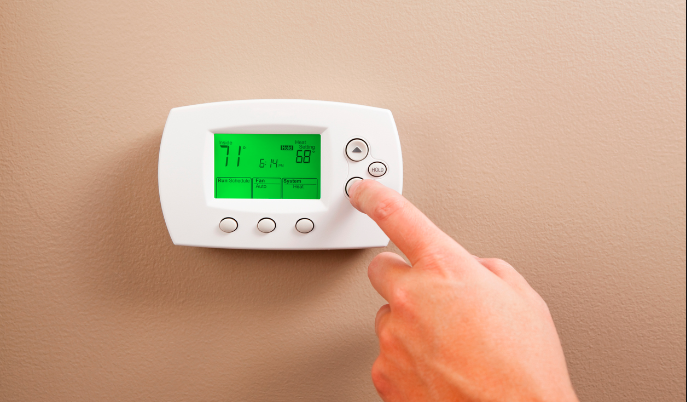Understanding the Different Types of Thermostats and Their Repair Needs

Thermostats are crucial in managing the comfort and efficiency of heating and cooling systems in homes and businesses. Various types of thermostats are available, each offering distinct features and functionalities. Understanding the different kinds of Westford thermostats and their associated repair needs can help ensure your climate control systems’ optimal performance and longevity. We will explore the characteristics of mechanical, digital, programmable, smart thermostats, and hybrid thermostats and provide insights into common issues and repair strategies for each type.
Mechanical Thermostats
Mechanical thermostats, also known as dial thermostats, are among the oldest and simplest thermostats. These devices use a bimetallic strip to sense temperature changes and control the heating or cooling system accordingly. When the temperature deviates from the set point, the bimetallic strip bends, causing a mechanical switch to open or close. Despite their simplicity, mechanical thermostats can encounter a range of issues. Common problems include calibration errors, where the thermostat fails to measure the temperature accurately, leading to inconsistent heating or cooling.
Additionally, mechanical parts can wear out over time, causing the thermostat to malfunction or become unresponsive. Regular maintenance, such as cleaning dust and debris from the thermostat and periodic recalibration, can help mitigate these issues. If a mechanical thermostat fails, replacement with a modern digital or programmable model might be necessary.
Digital Thermostats
Digital thermostats represent an advancement from mechanical models by offering precise temperature control and ease of use through electronic components. These thermostats typically feature a digital display and buttons for setting the desired temperature. Digital thermostats can be prone to different issues than their mechanical counterparts. One common problem is a malfunctioning display, which can result from electrical issues or damage to the screen.
Read also: How Electrical Upgrades Can Make Your Home More Energy Efficient
Additionally, digital thermostats may experience issues with temperature sensors, leading to inaccurate readings and inefficient system operation. Battery replacement is another frequent maintenance task, as many digital thermostats rely on batteries to function. Regularly checking and replacing the batteries and ensuring the thermostat is securely mounted can help prevent operational problems; professional repair or replacement may be required for more complex issues, such as circuit board failures.
Programmable Thermostats
Programmable thermostats offer enhanced control over heating and cooling systems by allowing users to set different temperature schedules for other times of the day or week. This feature helps optimize energy usage and maintain comfort based on daily routines. However, programmable thermostats can face specific challenges. One common issue is programming errors, where the thermostat does not follow the set schedule due to incorrect programming or system glitches.
Additionally, these thermostats may experience problems with their internal clock, leading to incorrect temperature adjustments. To address these issues, users should ensure that the programming is set correctly and that the thermostat’s clock is accurately synchronized. Regularly updating the program and checking for firmware updates can help maintain optimal performance. If programming issues persist, consulting the user manual or seeking professional assistance may be necessary to correct the problem.
Smart Thermostats
Smart thermostats represent the latest innovation in temperature control technology, offering advanced features such as remote access, learning capabilities, and integration with home automation systems. These thermostats can adjust settings based on user preferences, occupancy patterns, and external weather conditions. Despite their advanced technology, smart thermostats can encounter specific issues. Connectivity problems, where the thermostat fails to communicate with Wi-Fi networks or smart home systems, are a common challenge. Software glitches or firmware updates can also cause operational problems. To address connectivity issues, users should ensure that their Wi-Fi network is functioning correctly and that the thermostat is within range of the router. Regularly updating the thermostat’s firmware and checking for software updates can help resolve performance issues. In cases where connectivity or software problems persist, professional troubleshooting may be necessary to restore full functionality.
Hybrid Thermostats
Hybrid thermostats are a relatively new category combining features from traditional and modern thermostat types. These devices often integrate aspects of digital controls with programmable scheduling and smart capabilities. Hybrid thermostats offer the flexibility to manage multiple heating or cooling zones independently and can be controlled via a smartphone app or a physical interface. However, they can encounter unique issues related to their dual functionality. Users might experience difficulties with integrating hybrid thermostats into existing HVAC systems, which can result in erratic temperature control or system malfunctions.
Software issues or firmware bugs can also disrupt the hybrid thermostat’s performance. Regular software updates, proper installation, and compatibility checks with existing systems can mitigate these problems. If integration issues or software glitches persist, professional installation or technical support may be necessary to ensure the thermostat functions correctly and delivers the expected benefits.
Understanding the different types of thermostats and their repair needs can help ensure that your heating and cooling systems operate efficiently and reliably. Every kind of thermostat, whether mechanical, digital, programmable, or smart, has unique features and potential issues. Regular maintenance, timely repairs, and appropriate troubleshooting can extend the lifespan of your thermostat and enhance the comfort of your living or working environment. You can enjoy optimal performance and energy efficiency by addressing common problems and staying informed about your thermostat’s needs.





